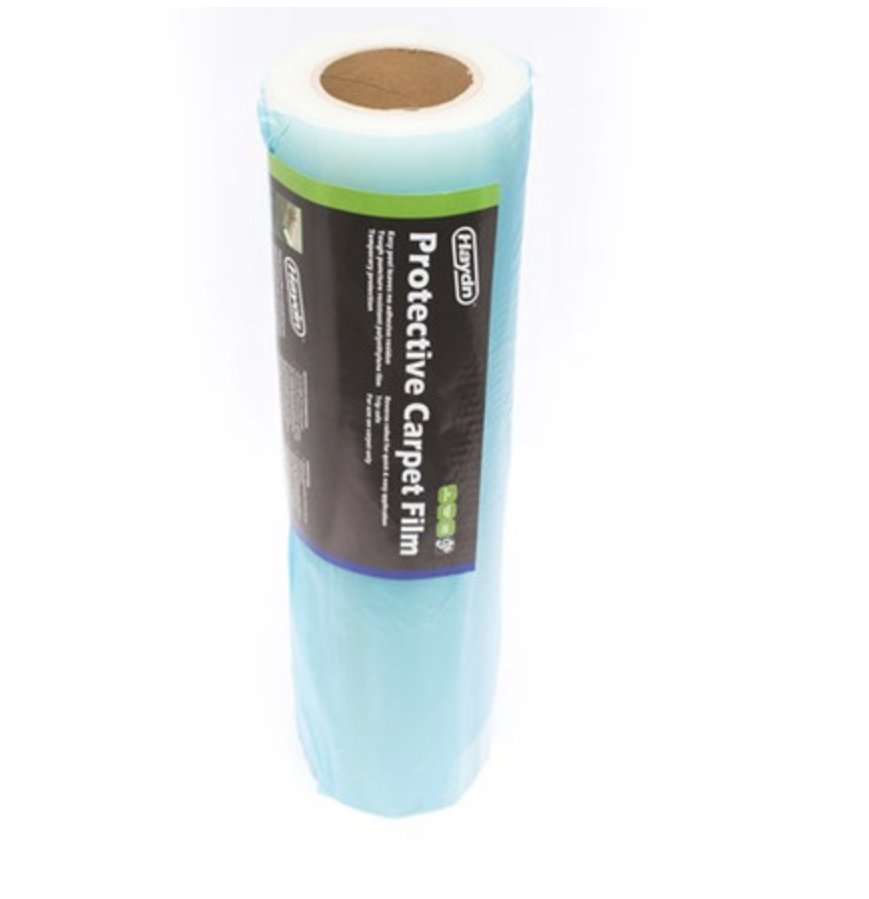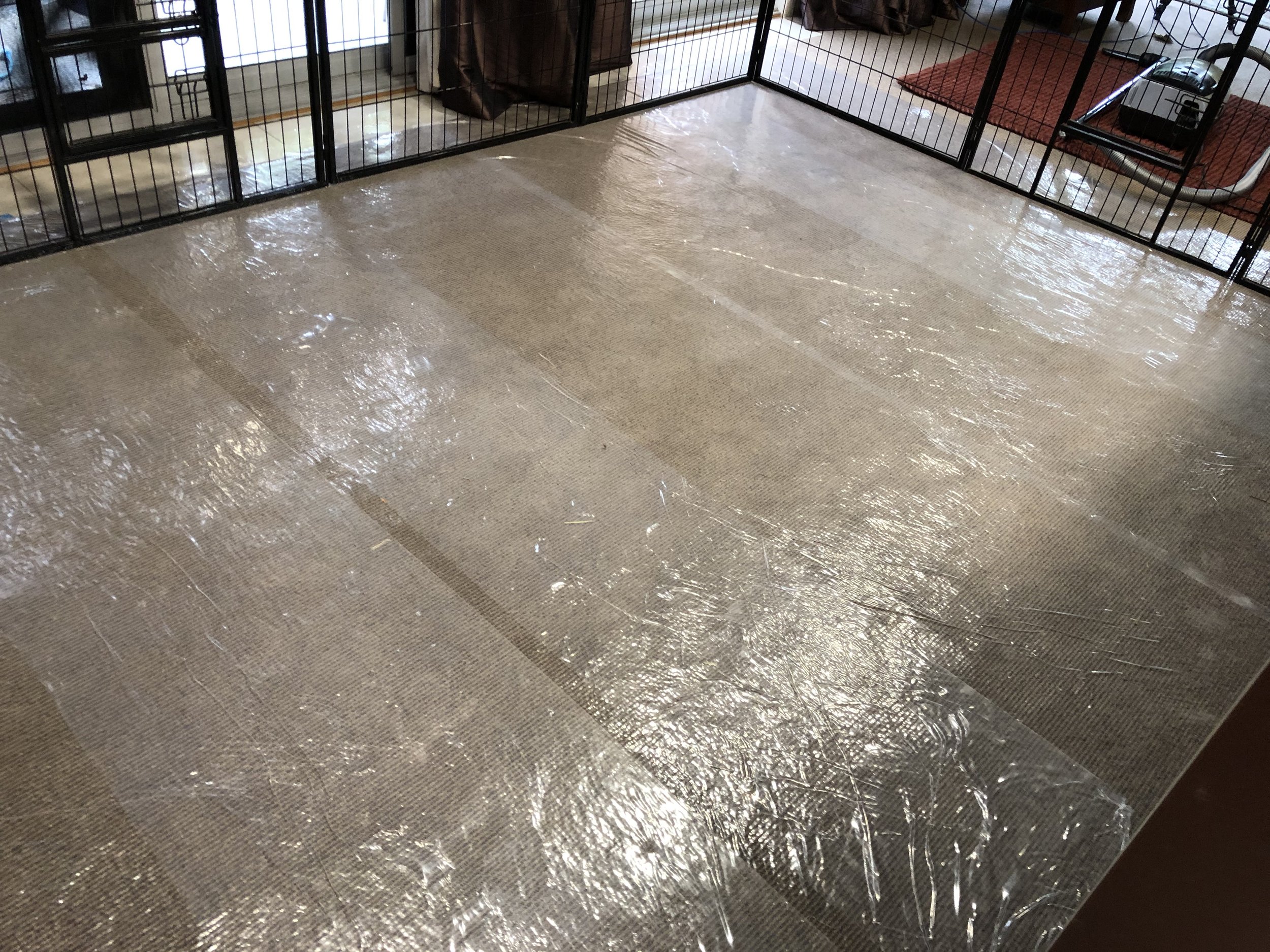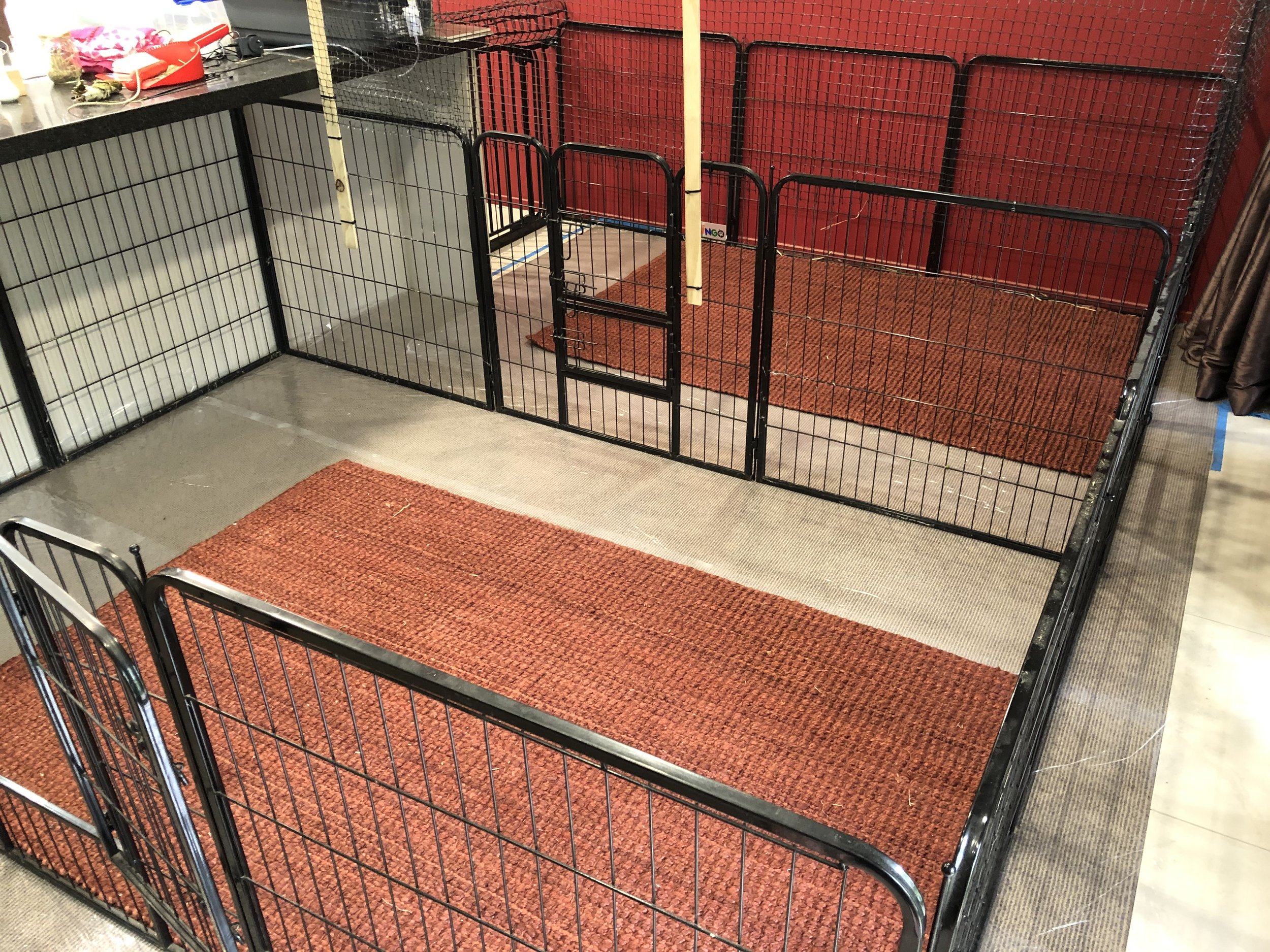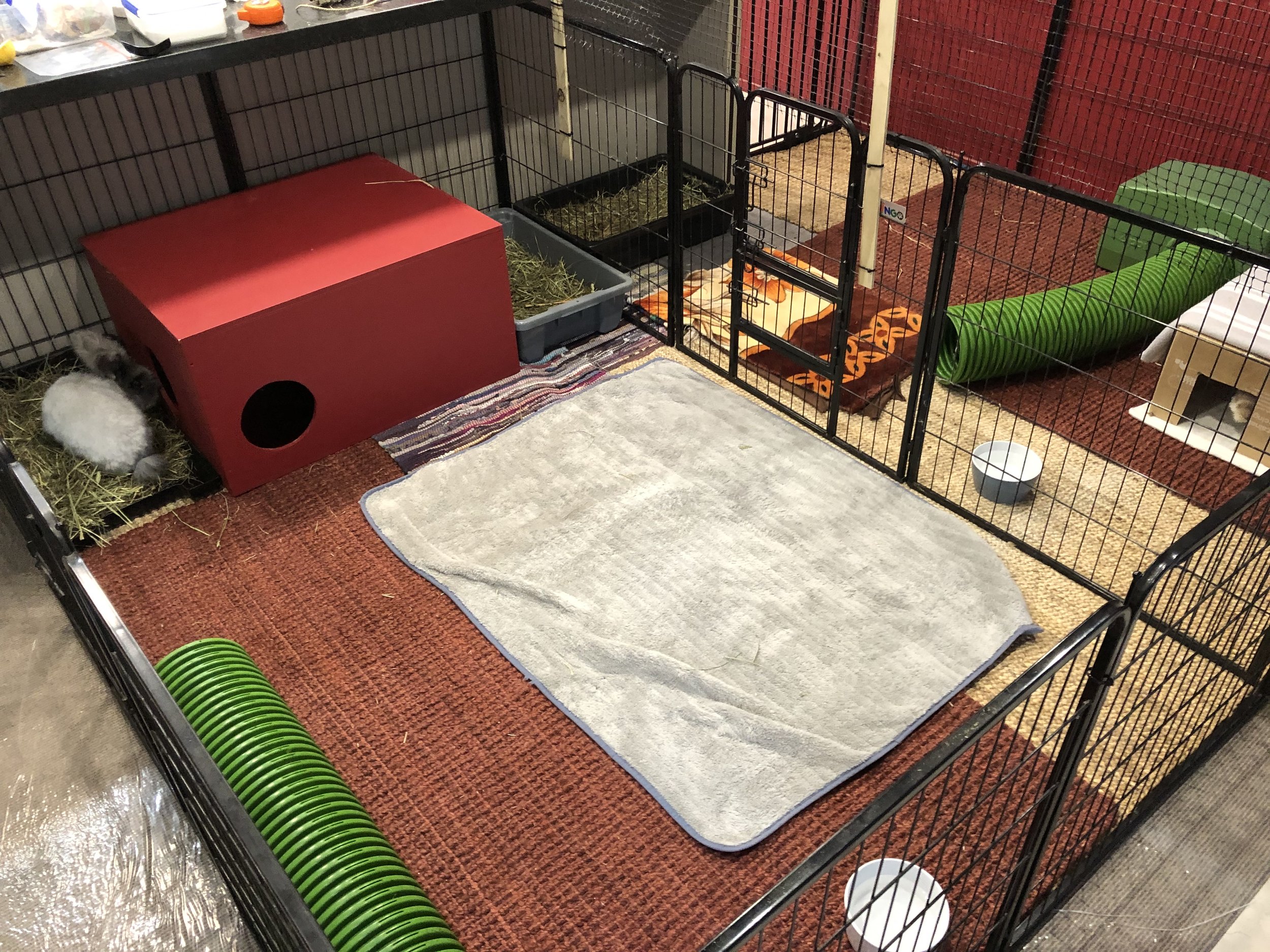Enclosure, Run & Pen Bases
If your rabbit is a digger you need to take measures to ensure it cannot get out of its run and into trouble. There are a number of options to solve this problem and you may need to experiment a bit to find a solution that works for you and your rabbit(s).
Often the most sensible solution is to have your rabbit's enclosure (walk in is the best!) set up in a permanent position so that the base can be made fully secure. If this is option chosen it's not really sensible to expect grass to survive in the run with rabbits living in/on it 24/7. So other solutions need to be explored.
I always err on the side of caution and ensure all of the enclosures for my rescue rabbits and my own rabbits are completely escape and predator proof. It's more effort up front but you simply can't beat peace of mind. Whilst some rabbits do not dig, many are hardened 'offenders' and owners of serious diggers will need to use the more robust solutions discussed below ...
Any solution is going to be a trade off/compromise between security and the enrichment provided by being on grass/access to digging.
OUTDOORS
Moveable Runs
A mesh skirt can be installed around the outside of a moveable run to stop the digger coming up on the outside. The run will need to be moved frequently and any holes filled in. This can also help deter dogs etc digging in.
Omlet Run Bases
These can be bought from Appletons. These are strong and robust, with bigger gaps that will let the grass come through when you move the run around. You would still need to cover some of the mesh or provide your rabbit with a resting place that is off the mesh to help protect their feet. However, these may not sit flat if the ground is uneven.
Permanent In Situ Enclosures
Pavers Perimeter
These can be placed around the inside perimeter of a permanent run. At least some of them would need to be covered over with something in order to ofter some protection for vulnerable bun hocks.
Pavers or Concrete
If your enclosure is placed directly onto a paved area or concrete then it is essential to fully cover the concrete to prevent sore hocks and to keep it cooler in the summer months. This can be a bit tricky.
For an uncovered enclosure - so one without a solid roof, Barley straw is probably the best option. You'd need to fluff it up and refresh it regularly to help it dry out ofter periods of rain.
For a roofed enclosure Barley straw would also work really well and would last for ages. Some use rubber jigsaw mats with Jute and/or cotton mats over the rubber mats, or just use the mats directly on the concrete as long as it stays dry.
Another option for both covered and uncovered enclosures is to place a wooden decking platform over the top of the concrete to help drainage and keep the floor dry and place then straw or mats over the decking. You can repurpose wooden pallets to do this for an affordable solution.
Mesh
The most common solution is to install wire mesh on the bottom of the run. Weldmesh is best because rabbits can and do dig and chew through chicken mesh. However, having exposed wire on the bottom of the run is not a good idea as it can lead to sore hocks and is uncomfortable for your rabbit. There are various ways to use mesh to avoid this -
Laid Flat - Mesh is laid flat on the ground and then completely covered over.
Buried, Shallow - Laid flat but covered with a layer of soil.
Buried, Deep - Mesh is buried beneath a deep layer of soil which allow digging to take place safely.
There are some examples of mesh in use below.
Decking
Here at Westley's World I have installed decking in all of the enclosures. I am totally sold on this solution. All of my enclosures are full roofed over so there in minimal rain incursion, but any rain that gets in drains away quickly. This means I can use jute and cotton mats over the decking to protect precious bun feet. I find this solution also assists with toilet training new buns very quickly. At times I also use a deep bed of Barley straw over the decking. It all depends on the individual rabbit and their particular needs.
Ways to Cover Mesh, Wood, Astro Turf and Concrete
Barley Straw
This is soft, warm, sheds rain well; and so doesn't go mouldy easily, and provides good enrichment for your rabbit. It can safely be nibbled on and if piled deeply can be good digging enrichment. Add a deep layer - at least 30cm, as the straw will pack down over time. If it is used fully under cover it will last for many, many months. If it is being rained on regularly it will break down faster and need replacing more often. You can fluff it up and refresh it with extra straw in between full changes. As long as they have large, inviting litter boxes filled with fresh hay, most rabbits differentiate between the straw and the litter box. If they are a bit confused then make sure to leave a straw free 'moat' around the litter box initially until they get the hang of it and place extra boxes where they toilet in the straw if necessary.
Astro Turf
This is mentioned quite often but it has some issues and in my opinion is best avoided. It is very abrasive; even the 'soft' ones, which means it can cause sore hocks quite quickly. It gets extremely hot in the summer if in the sun, and some rabbits eat it.
If it is used, securing the edge of the artificial grass out beyond the run or securing the grass to the edges of the run by running it up under laths/strips of wood which are screwed around the edges stops the rabbit ‘digging up’ the edge of the grass matting and chewing it.
If used in a covered run I recommend that it is covered with cotton or jute mats mats, or even Barley straw.
Cotton, Jute or Memory Foam Bath Mats
These are a really good option in a fully covered run. The cotton and jute mats are safe if chewed and are gentle on a rabbit's feet.
Mesh - Laid Flat or Buried, Shallow
Mesh is laid over the ground and held down with weed mat pins then covered with Barley Straw or soil and grass.
In Westley’s World’s Cabuna (left) the lawn was sprayed, then Weldmesh was installed and held down with weed mat pins. 10-20cm of organic lawn mix was then spread and grass seed, Plantain and Chicory from Westley's World were sown.
In Tiffany’s enclosure (right) Weldmesh laid down and pinned in place with a deep bed of straw over the top to protect the rabbit's feet.
Mesh Buried, Deep
The enclosure is 'excavated' with at least 30cm of soil being removed, mesh laid and soil replaced. Another option is to make a frame out of retaining timber that the enclosure walls will sit on top of. Lay mesh in the bottom, staple to the timber around the boundary, hold down with plenty of weed mat pins, then backfill with soil.
Other Things to Consider -
If your run is on a permanent hard surface you will need to provide enrichment in the form of a dig box etc for your rabbit so that it can still express normal and natural rabbit behaviour of digging. As mentioned above, a deep bed of Barley Straw can also be really good for digging enrichment.
You can also grow grass boxes etc in lieu of having the run on the grass and moving it around. Of course, if your garden is suitable you can let your rabbit out for free time on the grass with supervision as well. A puppy X-Pen extension to the enclosure can be handy for this as well.
Dig Barriers can be useful if you want to allow your rabbit to dig within their enclosure or out in your secure, fenced garden area. I've done this on the boundary of my Rabbitat (all other boundaries are secure).
I dug a trench - I went down 1/2m, inserted the barrier - I used Fibrolite, but you can use all sorts of things incl weldmesh, coreflute, old roofing iron etc, then I backfilled the trench and resowed grass etc. You can make it so the barrier is just below the soil surface so it is invisible.
This won't stop a really determined rabbit as they can of course dig under the barrier, but it will slow them down and give you time to back fill before they dig out.
Maybe worth a try?
INDOORS
INDOORS
Flooring
To protect exisiting carpet or floor boards -
Here at Westley’s World I am testing Heavy duty Carpet Film to protect the carpet from pee. This film is available from numerous home decorating retailers. Mine came from Millen. I’ve tried many approaches and this is the best to date. It doesn’t creep, is easy to sweep and is tough enough to walk over. It would not stand up to a determined rabbit digging it, so I offer multiple layers of rugs and blankets for the buns to dig instead. I find using the really thick, heavy Jute mats as a base layer is great for this.
Other Options -
Lino
Plastic backed polar fleece picnic rungs
Tarpaulin
Waterproof Mattress Protector
Heavy duty vinyl or polythene
Plywood or Strandboard
Heavy duty rubber 'anti fatigue' matting
Foam 'Jigsaw' matting (not fully pee proof)
Over concrete floors for warmth -
Foam backed garage carpet
Rubber backed carpet tiles
Plywood or Strandboard
Over the top of these you need to add a soft, non abrasive layer -
Cotton rag rugs
Cotton runner rugs
Jute mats or runners
Old cotton sheets or duvet covers
Old Continental Blankets
Polar Fleece Blankets
Memory Foam Bath Mats
Memory Foam Area Rugs/Mats for larger areas
Minkie Blankets
Brolly Sheets
Drybed Mat/Vet Bed
Where to find these -
Memory foam bathmats - K-Mart, The Warehouse
Cotton rag rugs - Mitre10, Spotlight
Jute mats and runners - K-Mart, Mitre10, Bunnings
Foam backed garage carpet - Mitre10, Bunnings
Duvet covers, sheets and Continental Blankets - Opshops etc
Cotton rugs/runners - Various incl K-Mart, Bunnings, Mitre10
Foam jigsaw mats - Bunnings, Mitre10
Rubber Backed Carpet Tiles - Bunnings, Mitre10
Brolly sheets - Shine Canine
Drybed Mat/Vet Bed - Shine Canine, Animates, MJs
Something to be aware of … A word about sore hocks
Surfaces such as fake grass, wooden floors, tiles and carpet are either hard or abrasive and can eventually cause sore hocks.
- “An ounce of prevention is worth a pound of cure," and this has never been more true than in the case of sore hocks. If sore hocks are allowed to worsen and pressure sores develop, they are very difficult to treat and recurrence is common. Normally, the prevention for sore hocks is to provide a rabbit with a clean, soft and overall hygienic lifestyle, but this can be challenging.
Here are some ways to prevent sore hocks:
You can read more here - Sore Hocks / Pododermatitis
Check your rabbit's feet and hocks often for signs of inflammation. If you notice any symptoms, begin treating immediately. If you just notice minor redness, try applying Bunny Balms, New Skin, Flamazine (short term only) etc to help relieve the skin.
If you see signs of inflammation or a developing sore, try using padding with a cohesive bandage or Westley’s World Hockassins to protect your rabbit's feet. This will help protect it from pressure, scraping, wetness and, if you are applying cream, licking.
Change their flooring - Do everything you can to evenly distribute pressure on your rabbit’s hock while s/he is resting on their bedding. For indoor rabbits or inside hutches etc this may mean adjusting their bedding to something softer and more pliable - a bedding that adjusts to support your rabbit just like an orthopaedic mattress does for humans. Try adding an 'egg-crate' foam, memory foam or compressed foam mats underneath their bedding to vary the bedding surface and limit pressure. Memory foam bath mats can work well too. Jute or thick cotton mats, multiple layers of polar fleece and layer of soft cotton sheets can help as well.
Clip your rabbit's nails regularly. Short nails will assist in distributing weight more evenly on the base of the foot. Longer nails cause the rabbit to shift more weight to the back of the paw, stressing that area, and increasing the potential to form sores.
Keep your outdoor rabbit’s enclosure as clean and as dry as possible. Buy extra bedding so that you can switch it out as it gets wet. Use more absorbable bedding and bedding that wicks moisture away from the surface. Outside - especially to cover concrete, use the compressed foam ‘jigsaw’ mats for a softer surface and/or add a thick layer of Barley straw. If the area is weatherproof then jute and cotton mats can also be used.
Keep your rabbit as clean and as dry as possible, especially in the hock area. Increase your cleaning frequency and effectiveness.



































